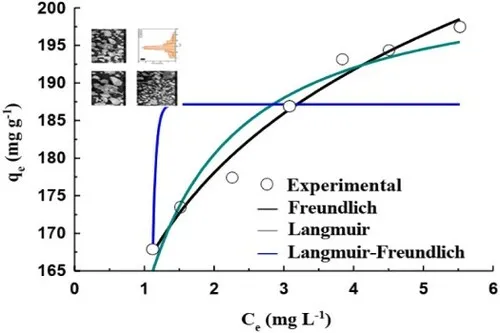The properties of an adsorbent prepared from cost effective materials were discussed and analyzed in this research work. A ubiquitous biomass, Terminalia ivorensis biomass modified with MnO2 (MTIB) was used for the adsorption of two anionic dyes (methyl orange (MO) and congo red (CR)). To adequately understand the viability of MTIB to adsorb MO and CR from contaminated water, it was characterized with some surface characterization techniques, which were bulk density, Boehm titration, pH point of zero charge, Fourier Transform Infra-Red and field emission-scanning electron microscopy. Surface characterization buttressed the experimental findings from multifarious data got from this research, which revealed that the major mechanisms for the adsorption of MO and CR onto MTIB were π-π stacking interaction and the adherence of these anionic dyes onto the functional moieties on the surface of MTIB. The experimental data most fit into the Langmuir-Freundlich equilibrium and Mixed-1,2-order kinetic models. The adsorption capacities, qmaxLF of MTIB for MO and CR were 81.32 and 92.84 mg g−1 respectively. Desorption study showed that MTIB could be used as a suitable adsorbent to treat water contaminated with toxic anionic dyes.
